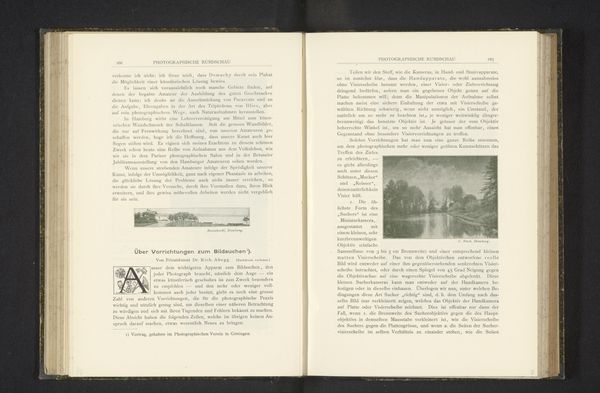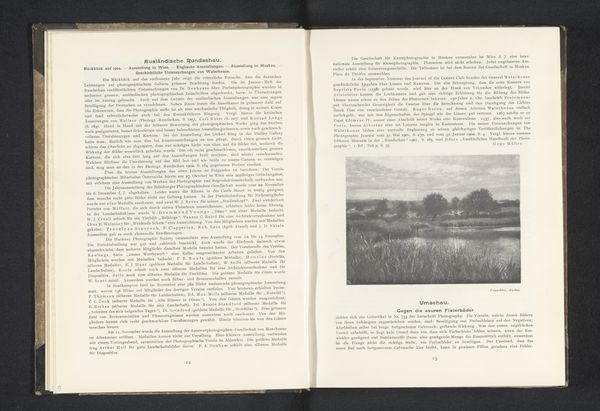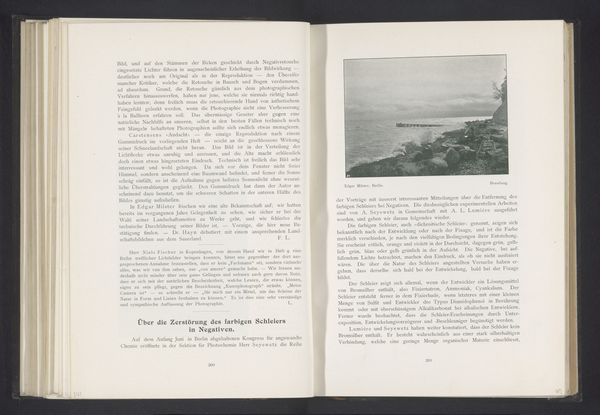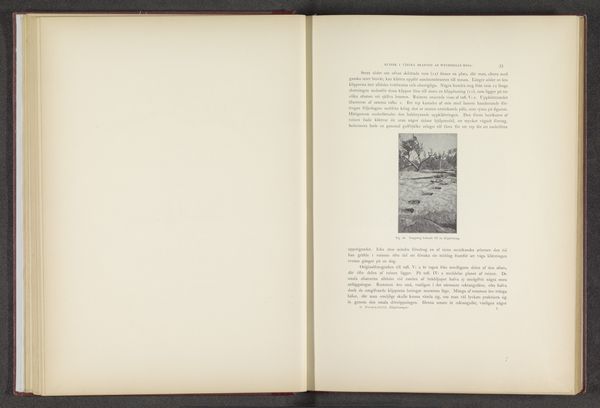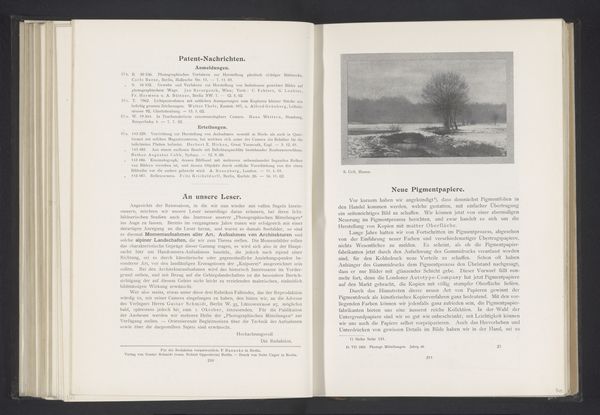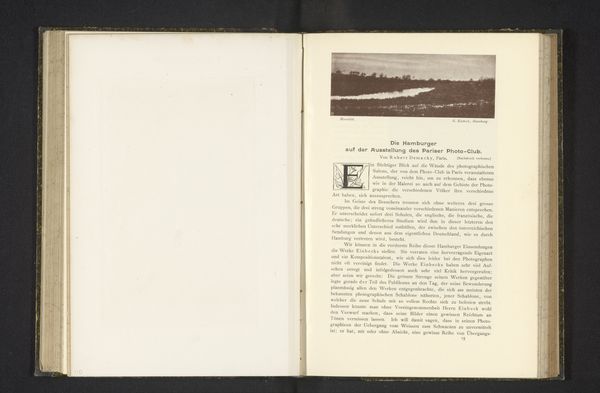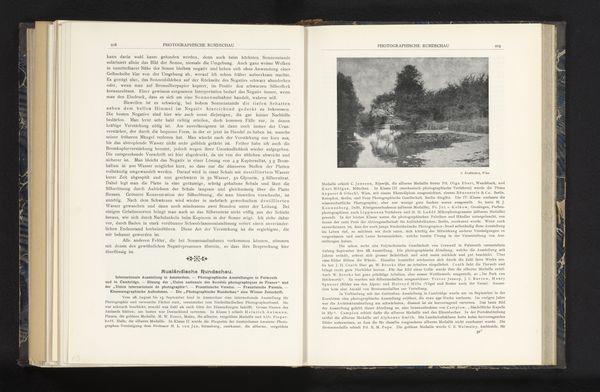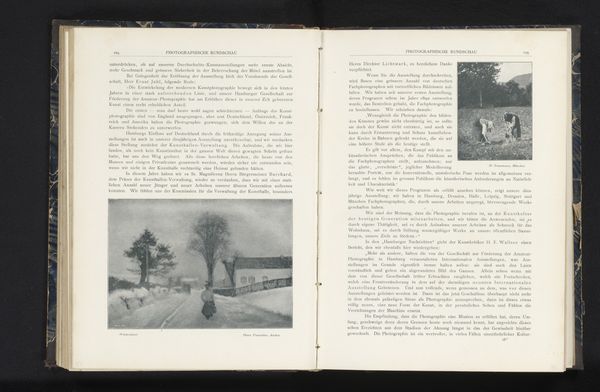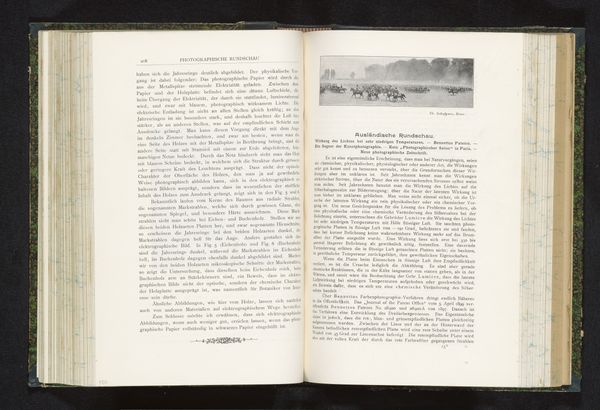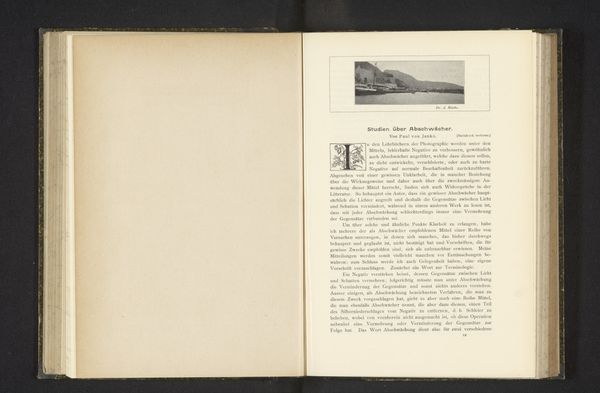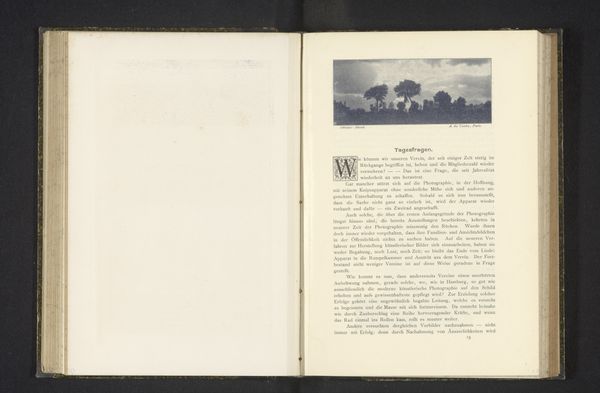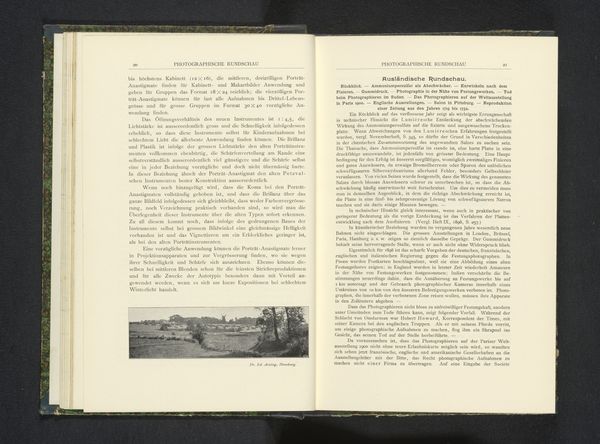
print, photography, albumen-print
# print
#
landscape
#
photography
#
albumen-print
Dimensions: height 85 mm, width 144 mm
Copyright: Rijks Museum: Open Domain
Curator: This is “Gezicht op een aantal planten aan het water,” or “View of several plants by the water,” a landscape photograph made before 1902 by Frederick Hollyer. It's an albumen print, housed in an album. Editor: The tonality strikes me first—a delicate wash of sepia. There’s a formal balance too: the solid mass of the foliage in the foreground countered by the expanse of the water and distant treeline. Very controlled. Curator: Absolutely. Hollyer's works often depicted literary figures and artists associated with the Pre-Raphaelite movement. But his landscapes are also intriguing because of their social context. These cultivated nature scenes reflected a yearning for an ideal landscape rooted in England’s cultural identity, in contrast with rapid industrialisation and urbanization. Editor: I notice the texture in the plants near the water. Hollyer used an albumen print, which renders the forms with remarkable precision— almost scientific observation of botanical life here, like he's dissecting the elements before our eyes. This crispness gives a striking formality. Curator: His background really matters, Frederick Hollyer originally worked as a reproductive photographer for artists such as Edward Burne-Jones and Dante Gabriel Rossetti, which made him deeply embedded within a social and artistic network that sought to redefine beauty. Think of the Arts and Crafts movement—it’s about challenging the division of labor and promoting artistic collectivity and individual self-expression against industrial production. Editor: So, we're presented with more than a simple visual representation. It operates, through structure and motif, on these artistic intentions of its time. The layering within—water, flora, trees—feels like an architecture. Curator: Indeed, a conscious structuring of nature as cultural manifesto. A visual statement linked to prevailing ideas about societal change and national identity through an idealized, constructed landscape. It invites us to see beyond its picturesque qualities. Editor: By drawing attention to compositional arrangement, materiality, and texture, we appreciate Hollyer's aesthetic choices but also the intentionality behind the photographic process itself. Curator: Precisely. Through its depiction of the environment as both an object of beauty and an element in cultural identity, the photograph opens to narratives of tradition, progress, and society during times of dramatic social shifts.
Comments
No comments
Be the first to comment and join the conversation on the ultimate creative platform.

